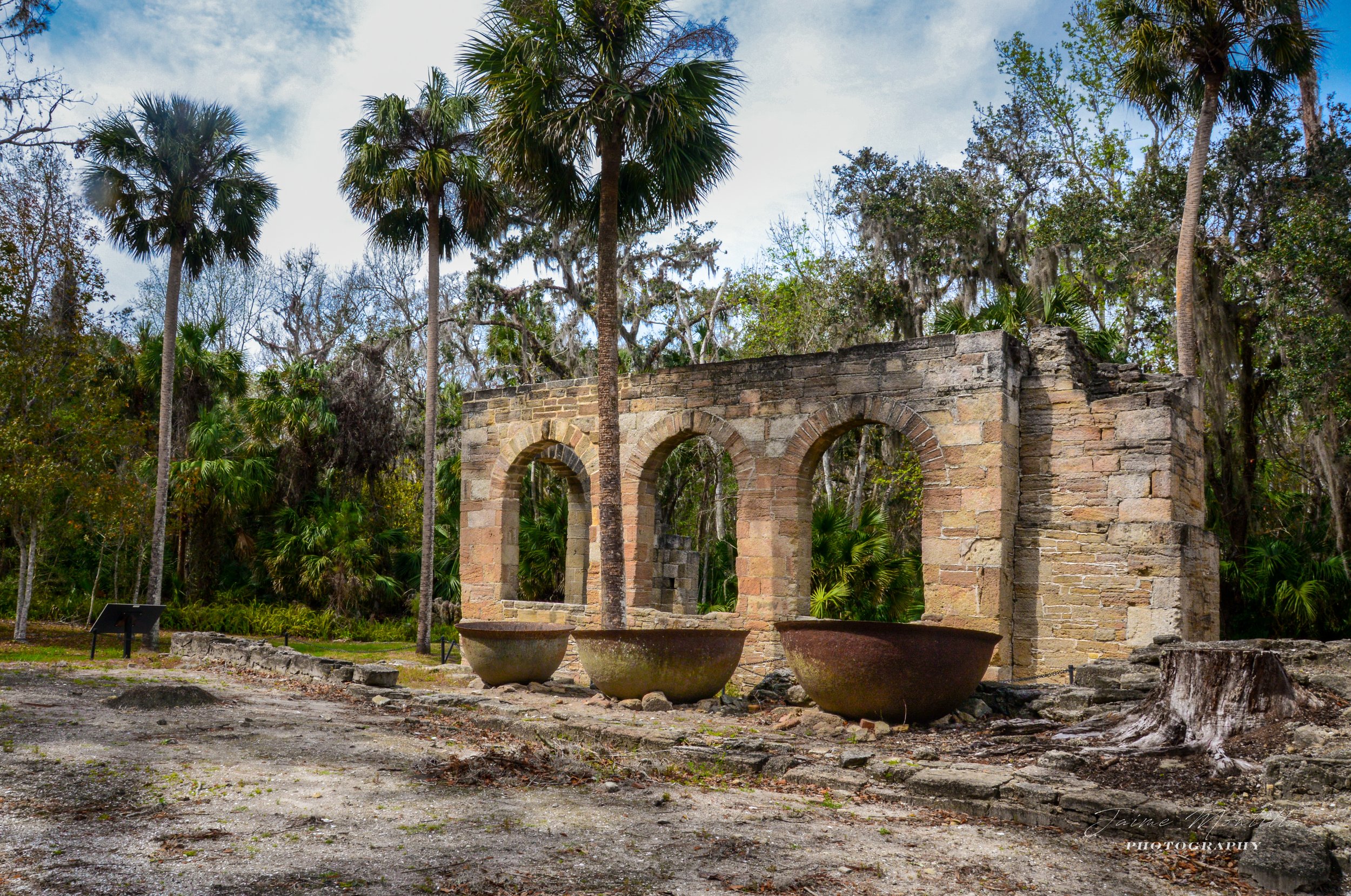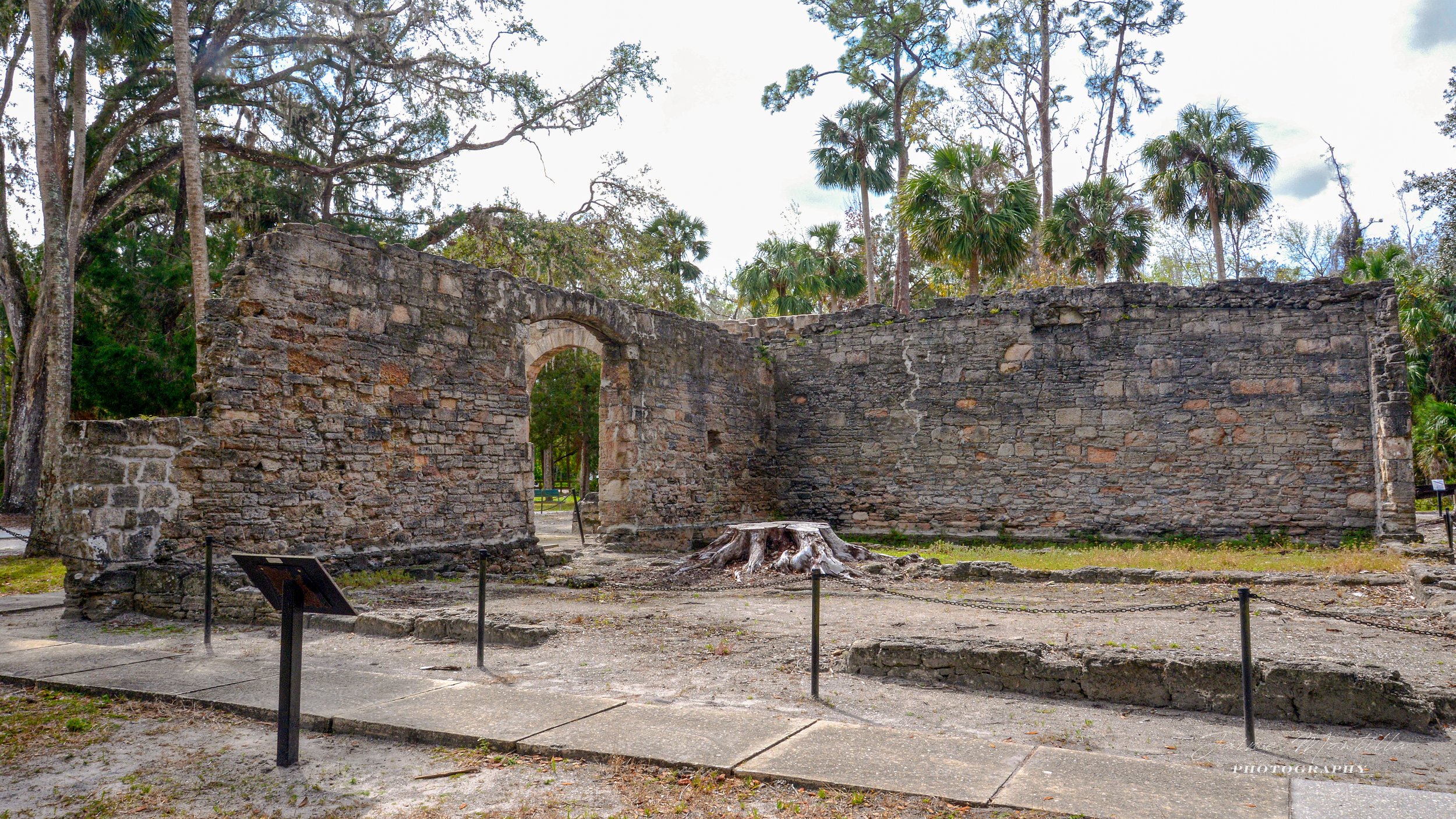
Cruger-DePeyster
According to the National Register of Historic Places Inventory–Registration Form, in 1830 William Kemble contracted to build a steam sugar and saw mill for William DePeyster and Eliza and Henry Cruger of New York. The mill was financed mainly with Cruger's wife money and constructed as part of a 600 acre plantation near New Smyrna that Cruger had acquired from Ambrose Hull, who in turn had received it as a grant from the Spanish government during the Second Spanish Period (1783-1821).
The Cruger-DePeyster sugar mill operated for only five years as on Christmas Day 1835, a band of Seminole Indians, with the help of the plantation's slaves themselves, plundered the plantation forcing the overseers and slaves to flee across the Halifax River to safety. That night the sugar mill and other buildings were set on fire. Subsequent occupation of the ruins by troops in the course of the war resulted in its alteration for defensive reasons. After it was destroyed, Its machinery was removed and installed at the Dunlawton Sugar Mill.
After many years of abandonment, in 1913 the sugar mill and surrounding land was purchased as a Winter home by New York financier and stockbroker Washington Everett Connor (1849-1935) and his second wife Jeannette Thurber Connor (1872-1927) whom he married that same year after the death of his first wife Louise Talcott Connor in 1911. Before coming under control of the Florida Park Service as a Historic Site in 1929, the property was for a long time mistakenly thought by Jeannette and many to be the ruins of the Mission of Atocuimi, a Spanish mission for the Timucua Indians.
The Cruger-DePeyster sugar factory structure was believed to be divided into three main rooms; the engine room, the kettle train and the purgery. The engine room was where the steam driven roller mill to crush sugar cane was located. In the same room were the well or water source for the boiler that produced the seam to move the mill. The kettle or jamaican train located at the other side of the arches, consisted of a series of kettles ranging in size from bigger to smaller where the juice extracted in the engine room was heated until reduced to a syrup. The chimney, which base is pictured, provided the draft to extract the smoke from the fire needed to heat the kettles from underneath. The third room was the purgery, where barrells filled with the wet sugar syrup was stored for weeks until dried or crystalized. The liquid that dripped from the barrels barrels was molasses, used by some sugar factories in the production of rum.
The site was listed on the National Register of Historic Places on 12 August 1970.






